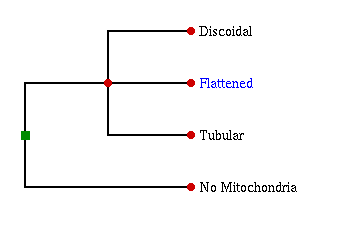Raphidiophrys is a genus of centrohelid heliozoan amoebae, containing approximately sixteen species. Most are known from freshwater environments of low turbidity, although two species have been recorded from saline water. They are planktonic predators, feeding on other protists, especially unicellular algae, that swim into them. The centrohelid heliozoa are among the few protists with flattened mitochondrial cristae, and the group thus may provide some information on the relationships among "flat-cristae" eukaryotes (animals, fungi, choanoflagellates; plants, red algae, glaucocystophytes, cryptomonads). Cell biologists interested in the dynamics of microtubules within eukaryotic cells, and in the biogenesis of siliceous structures, have sometimes used these protists as experimental organisms.

Postulated global eukaryote phylogeny based on presence or (ancestral) absence of mitochondria, and shape of mitochondrial cristae. Raphidiophrys belongs to the flattened clade.

Possible phylogenetic position of Raphidiophrys, inferred from morphological data (no molecular data are available). Branch lengths are arbitrary and do not reflect phylogenetic distance.
Return to summary information